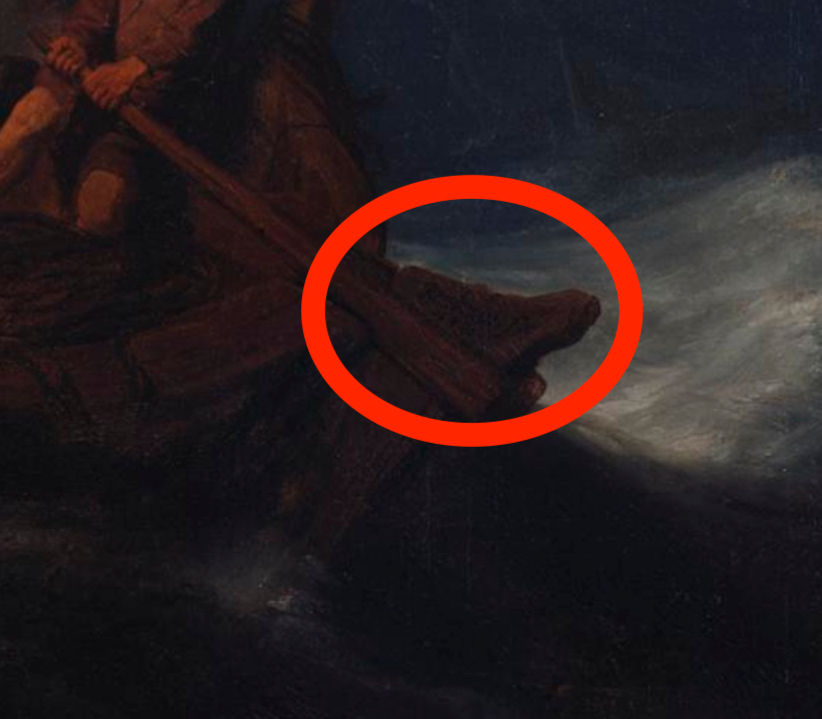In Detail: Rembrandt's Storm on the Sea of Galilee
- Russ Ramsey

- Sep 28, 2022
- 3 min read
Today’s Art Wednesday will focus on one painting by Rembrandt—Storm on the Sea of Galilee (1633), stolen from the Isabella Stewart Gardner Museum in Boston in 1990. No one has seen it since.
Details matter. They’re beautiful. They import the drama. Rembrandt painted The Storm on the Sea of Galilee in 1633, shortly after moving from his home in Leiden to Amsterdam. Rembrandt’s “ability not only to represent a sacred history, but also to seize our attention and immerse us in an unfolding pictorial drama”[1] makes the The Storm on the Sea of Galilee transcend the scene itself. The story here is about so much more than one group of men getting caught up in that one storm on that one afternoon. This painting is about all of us. Rembrandt retraces the old story that pits man against nature as the angry sea tosses that fully rigged boat with her terrified passengers around like a toy.

Rembrandt, Storm on the Sea of Galilee, 1633
Let’s zoom in on some of the detailed brilliance of Rembrandt’s lone seascape. First, notice how Rembrandt conveys the dire situation not only in the swelling sea, but also in the rigging that has broken loose, showing the boat’s loss of control.

Rembrandt, Storm on the Sea of Galilee, 1633, Rigging Detail
Notice how half the disciples—those in the bow—are struggling to keep the boat afloat, while those in the stern are focused on pleading for Jesus to help them.

Rembrandt, Storm on the Sea of Galilee, 1633, Men in bow detail
Rembrandt pits the vulgar against the divine as one disciple vomits over the leeward rail while another, only two feet away, holds on to the Second Person of the Blessed Trinity, pleading for him to save them.

Rembrandt, Storm on the Sea of Galilee, 1633, Men in Stern detail
Rembrandt painted himself into the boat. He wants us to know he believes his life will either be lost in a sea of chaos or preserved by the Son of God. And by peering through the storm and out of the frame to us, he asks if we are not in the same boat.

Rembrandt, Storm on the Sea of Galilee, 1633, Rembrandt Figure detail
Rembrandt’s name is scrawled across the useless rudder, as though this is his boat on his sea and they are all caught in his storm. He and everyone else in the ship are soon to be lost unless their leader intervenes.

Rembrandt, Storm on the Sea of Galilee, 1633, Rembrandt Figure detail
If Storm on the Sea of Galilee still exists, Rembrandt, in all his glory, is tucked away in some closet, attic, or vault, hidden from the world. He is still clutching that rope; still trying to keep his hat from flying off his head. And he is looking out into our world for anyone who will make eye contact. If he still exists, it is quite a storm he is caught in.
Someday soon, the Bible tells us, Jesus will stand and say to widows and thieves alike, “Peace, be still.” His words will be followed by an unprecedented, eternal calm.[2] Knowing this helps us now. Whatever we suffer, we need not grieve as those who have no hope.
So we learn to hope in a coming kingdom. But we do so knowing that in this one, at least for now, Rembrandt is in the wind.
[1] Michael Zell, Christ in the Storm on the Sea of Galilee, Eye of the Beholder, edited by Alan Chong et al. (Boston: ISGM and Beacon Press, 2003): p. 145.
[2] Revelation 21:1-5







link link link link link link link link link link link link link link link link link link link link link link link link link link link link link link link link link link link link link link link link link link link link link link link link link link link link link link link link link link link link link link link link link link link link link link link link link link link link link link link link link link link link link link link link link link link link link link link link link link link link link link link link link link link link link link link link link link link
My catering company wanted pitchers for iced tea at weddings. I needed something with secure lids. I found https://mcdonaldpaper.com/lav-tru140-47-3-oz-truva-glass-pitcher-with-lid-6-cs, which lists 47.3-oz Truva pitchers. Their site shows these glass pitchers, ideal for events, with bulk purchase options and spill-proof lids. They offer competitive pricing, strong glassware, and fast delivery. The pitchers make my service look polished.